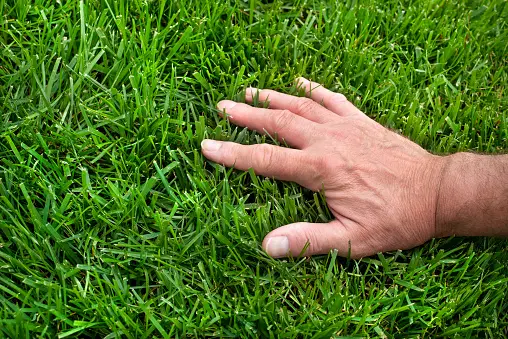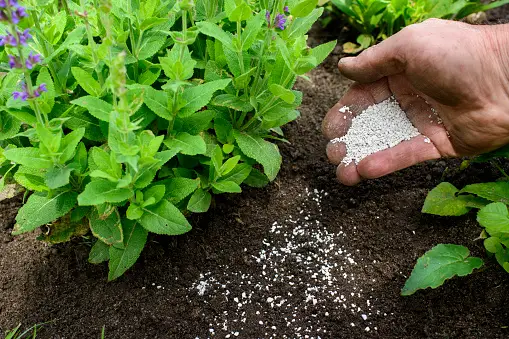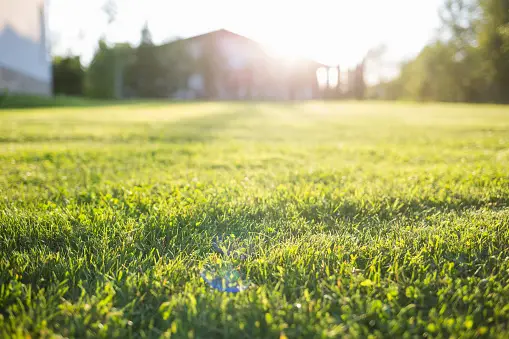The Importance of Lawn Fertilization

Fertilizing your lawn serves several critical purposes that contribute to your turf’s overall health and appearance. Here are some key benefits of regular lawn fertilization:
- Nutrient Supply: Fertilizers provide essential nutrients like nitrogen (N), phosphorus (P), and potassium (K) to your grass, which are vital for growth, color, and overall health.
- Enhanced Growth: Properly fertilized lawns tend to grow more vigorously, resulting in a lush, green carpet of grass.
- Weed Suppression: A healthy, dense lawn can naturally suppress the growth of weeds by outcompeting them for resources.
- Improved Stress Tolerance: Fertilized lawns are better equipped to withstand environmental stressors such as drought, disease, and pests.
- Enhanced Aesthetic Appeal: Fertilization contributes to the vibrant green color that many homeowners desire for their lawns, enhancing the curb appeal of your property.
Understanding Different Lawn Types
To determine the right fertilization approach for your lawn, it’s crucial to identify your grass type. The two primary categories of lawn grasses are cool-season grasses and warm-season grasses, each with its own set of requirements.
Cool-Season Grasses
Cool-season grasses thrive in regions with cooler temperatures, typically in the northern parts of the United States. Common cool-season grasses include Kentucky bluegrass, fescue, and ryegrass. These grasses have their peak growth periods in the spring and fall.
Fertilization Schedule for Cool-Season Grasses:
- Spring Application: Fertilize in early spring as the grass starts to grow actively.
- Fall Application: Apply fertilizer again in the early fall to strengthen the grass before winter.
Warm-Season Grasses
Warm-season grasses are well-suited for warmer climates like the southern United States. Varieties like Bermuda grass, St. Augustine grass, and Zoysia grass thrive in hot summers and have their primary growth periods during the summer months.
Fertilization Schedule for Warm-Season Grasses:
- Late Spring Application: Fertilize in late spring as the grass enters its peak growing season.
- Summer Application: Consider a light application in mid-summer to maintain color and health.
- Early Fall Application: Apply fertilizer in early fall to prepare the grass for the cooler months.

Soil Testing
To further tailor your fertilization program, conducting a soil test is advisable. A soil test provides valuable insights into your soil’s nutrient levels and pH, helping you make informed decisions about the type and quantity of fertilizer to use. Many local agricultural extension offices offer soil testing services or kits that you can use to collect and send in a soil sample.
Choosing the Right Fertilizer
Once you understand your lawn type and have the soil test results, you can select the appropriate fertilizer. Fertilizers are typically labeled with a series of numbers representing the N-P-K ratio, indicating the percentage of nitrogen, phosphorus, and potassium in the product. The ideal ratio depends on your lawn’s specific needs, as determined by your soil test.
The Basics of Slow-Release Fertilizers
As the name suggests, slow-release fertilizers are designed to release nutrients gradually over an extended period. These nutrients include essential elements like nitrogen (N), phosphorus (P), and potassium (K), along with secondary and micronutrients. The key component responsible for this gradual release is the fertilizer’s coating or formulation.
Understanding the Coating
The secret behind slow-release fertilizers lies in their specialized coating. This coating, often made of polymers or sulfur, controls the rate at which nutrients are released into the soil. This gradual disbursement ensures that your plants receive a consistent and steady supply of nutrients over several weeks or even months.
How Do Slow-Release Fertilizers Work?
Unlike conventional fertilizers that release their nutrients all at once, slow-release fertilizers break down slowly in response to environmental factors like temperature, moisture, and microbial activity. This controlled release minimizes the risk of over-fertilization and nutrient leaching, both of which can harm your plants and the environment.
Advantages of Using Slow-Release Fertilizers
Slow-release fertilizers offer several advantages that make them a preferred choice for many gardeners:
- Long-Lasting Nutrient Supply: These fertilizers consistently provide nutrients to your plants over an extended period, reducing the need for frequent applications.
- Reduced Risk of Over-Fertilization: With slow-release fertilizers, there’s less chance of accidentally harming your plants by applying too much fertilizer at once.
- Environmental Benefits: The controlled nutrient release minimizes nutrient runoff, which can harm nearby water bodies and ecosystems.
- Time and Labor Savings: Using slow-release fertilizers means fewer applications, saving you time and effort in your gardening endeavors.
When Should You Use Slow-Release Fertilizers?
Now that we understand the basics and benefits of slow-release fertilizers, let’s explore when you should consider using them in your garden.
At the Start of the Growing Season
One of the best times to apply slow-release fertilizers is at the beginning of the growing season. This provides your plants with a steady supply of nutrients right from the start, ensuring healthy and vigorous growth.
For Perennial Plants
Perennial plants, which come back year after year, can benefit greatly from slow-release fertilizers. Applying these fertilizers in early spring or late fall helps sustain their nutrient needs throughout the year.
In Containers and Hanging Baskets
Container plants, such as those in pots and hanging baskets, rely solely on the nutrients available in their confined space. Slow-release fertilizers can be a lifesaver here, as they gradually provide the necessary nourishment over an extended period, reducing the need for frequent watering.
For Landscape Trees and Shrubs
Landscape trees and shrubs are long-term investments in your garden. Using slow-release fertilizers on these plants ensures they receive a consistent supply of nutrients, promoting healthy growth and longevity.
When You Have a Busy Schedule
Slow-release fertilizers are your go-to solution if your schedule doesn’t permit regular fertilizing. Their infrequent application requirements make them ideal for busy gardeners.
FAQs
Q: Are slow-release fertilizers suitable for all types of plants?
A: While slow-release fertilizers are versatile, choosing a formulation that matches your specific plant’s nutrient requirements is essential.
Q: How long do slow-release fertilizers last?
A: The duration varies depending on the product, but they can last anywhere from a few weeks to several months.
Q: Can slow-release fertilizers be used in organic gardening?
A: Yes, organic slow-release fertilizer options are available that align with organic gardening principles.
Q: Is there a risk of nutrient buildup with slow-release fertilizers?
A: While the risk is minimal, following recommended application rates to avoid excess nutrient accumulation in the soil is essential.
Q: Can slow-release fertilizers be used in indoor gardening?
A: Absolutely! They are also convenient for indoor plants, ensuring they receive a consistent nutrient supply.
Q: Are slow-release fertilizers more expensive than conventional ones?
A: Initially, they may seem pricier, but their long-lasting effects and reduced application frequency often make them a cost-effective choice.
Changing The Lawn Game

In the world of gardening, slow-release fertilizers are a game-changer. They provide a steady and consistent nutrient supply to your plants, promote healthy growth, and reduce the risk of over-fertilization and environmental harm. Whether you’re a seasoned gardener or just starting, consider incorporating slow-release fertilizers into your gardening routine. Your plants will thank you with lush, vibrant blooms and bountiful harvests.
Remember, the key to successful gardening is what you grow and how you nourish it. Slow-release fertilizers offer a smart and efficient way to give your plants the care they deserve. Give your lawn the attention it needs, and you will see the results that you truly want.

